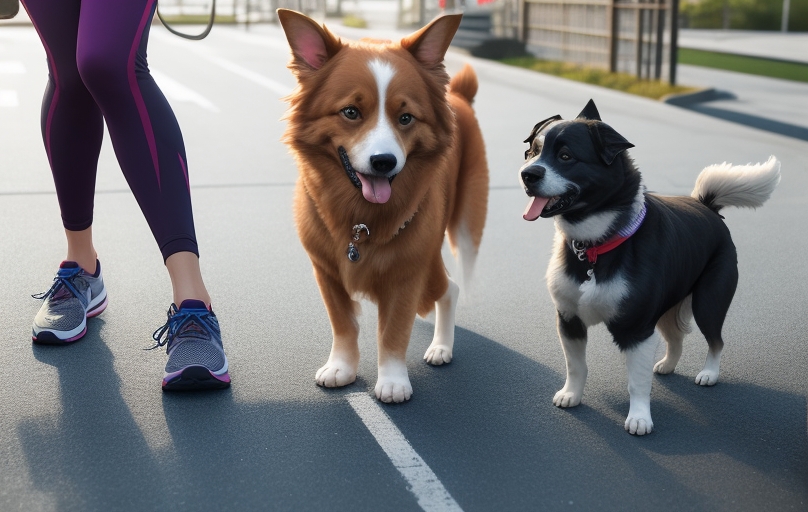Teaching two dogs to get along can be challenging. It’s crucial to be aware of common Mistakes to Avoid When Teaching Two Dogs to Get Along. As you work to foster a harmonious relationship between your canine companions, you must be aware of common mistakes that dog owners often make. Avoiding these errors can make the integration smoother and more successful. Let’s delve into these mistakes and how to prevent them:
Scientific Research Insights
1. The Effects of Punishment on the Behavior of Dogs in a Multi-Dog Household
This study found that punishment was not effective in reducing aggression or increasing positive interactions between dogs in a multi-dog household. In fact, the researchers found that punishment was more likely to lead to increased aggression and fear in the dogs.
2. The Effects of Resource Guarding on the Relationship Between Two Dogs
This study found that resource guarding was a major factor in conflict between dogs in a multi-dog household. Resource guarding is a type of aggression that occurs when a dog feels threatened by another dog approaching or taking a resource that it values, such as food, toys, or sleeping space.
Read Also: How Do I Make My Dog Has The Best Life?
Mistakes to Avoid When Teaching Two Dogs to Get Along

1. Rushing the Introduction:
One of the most common mistakes is rushing the initial meeting between the dogs. Forcing them into a face-to-face encounter without proper preparation can lead to stress, fear, and even aggression. To avoid this, take your time to prepare both dogs and create a controlled environment for their first meeting.
2. Lack of Supervision:
Allowing the dogs to interact without supervision, especially during the initial stages of introduction, is risky. Unsupervised interactions can escalate into conflicts, and you may miss early signs of tension. Always keep a close eye on your dogs when they are together and be ready to intervene if necessary.
3. Neglecting Individual Needs:
Mistakes to Avoid When Teaching Two Dogs to Get Along. Each dog has unique needs and personalities. Neglecting to address these individual differences can lead to problems. For instance, one dog may require more exercise or attention than the other. Be sure to cater to their specific needs to prevent feelings of neglect or competition.
4. Inconsistent Rules and Boundaries:
Inconsistency in setting rules and boundaries can confuse your dogs. If one day a behavior is allowed, and the next day it’s discouraged, your dogs won’t understand what’s expected of them. Be consistent in your training and interactions to provide a stable and predictable environment.
5. Overreacting to Minor Conflicts:
Dogs use subtle body language and vocalizations to communicate, and occasional disagreements are natural. Overreacting to every minor conflict can create tension. Instead, observe their interactions and intervene only when necessary to prevent serious issues.
6. Favoritism:
Mistakes to Avoid When Teaching Two Dogs to Get Along. It’s crucial to avoid showing favoritism towards one dog over the other. Unequal attention or treatment can lead to jealousy and rivalry. Ensure that both dogs receive equal love, care, and opportunities for bonding.
7. Ignoring Signs of Stress:

Dogs may exhibit signs of stress or discomfort during interactions, such as excessive panting, pacing, or avoiding eye contact. Ignoring these signs can lead to a negative association with the other dog. If you notice signs of stress, separate the dogs and give them space to relax.
8. Skipping Obedience Training:
Basic obedience training is essential for dogs, especially when introducing a new canine companion. Skipping this training can lead to a lack of control over your dogs, making it challenging to manage their interactions effectively.
9. Not Providing Enough Exercise:

Mistakes to Avoid When Teaching Two Dogs to Get Along. Dogs with pent-up energy are more likely to become agitated or irritable, which can lead to conflicts. Make sure both dogs get enough exercise to help them release energy and reduce tension.
10. Overcrowding:
Introducing multiple new dogs at once can be overwhelming for your current pets. It’s generally advisable to introduce dogs one at a time to minimize stress and make it easier for them to adapt.
Conclusion
Mistakes to Avoid When Teaching Two Dogs. By avoiding these common mistakes, you can significantly improve the chances of your dogs getting along and forming a positive bond. Remember that patience, consistency, and understanding of your dogs’ needs are key to a successful introduction and a harmonious coexistence.
FAQs:
1. What is the best way to introduce two dogs to each other?
The best way to introduce two dogs to each other is to do it slowly and in a neutral environment. Start by walking the dogs on opposite sides of the street and gradually let them get closer to each other
2. How do I stop my dogs from fighting?
If your dogs start to fight, the most important thing is to stay calm. Do not try to break up the fight with your hands. Instead, try to distract the dogs with a loud noise or a spray of water. Once the dogs are separated, keep them apart until they have calmed down.
3. How long does it take for two dogs to get along?
There is no one-size-fits-all answer to this question. Some dogs may get along right away, while others may take weeks or even months to warm up to each other
4. When should I hire a professional dog trainer?
If you are having trouble teaching your dogs to get along on your own, you may want to consider hiring a professional dog trainer. A good dog trainer can help you develop a personalized training plan that is right for your dogs.

1 thought on “Mistakes to Avoid When Teaching Two Dogs to Get Along: 10 Commom Mistakes”